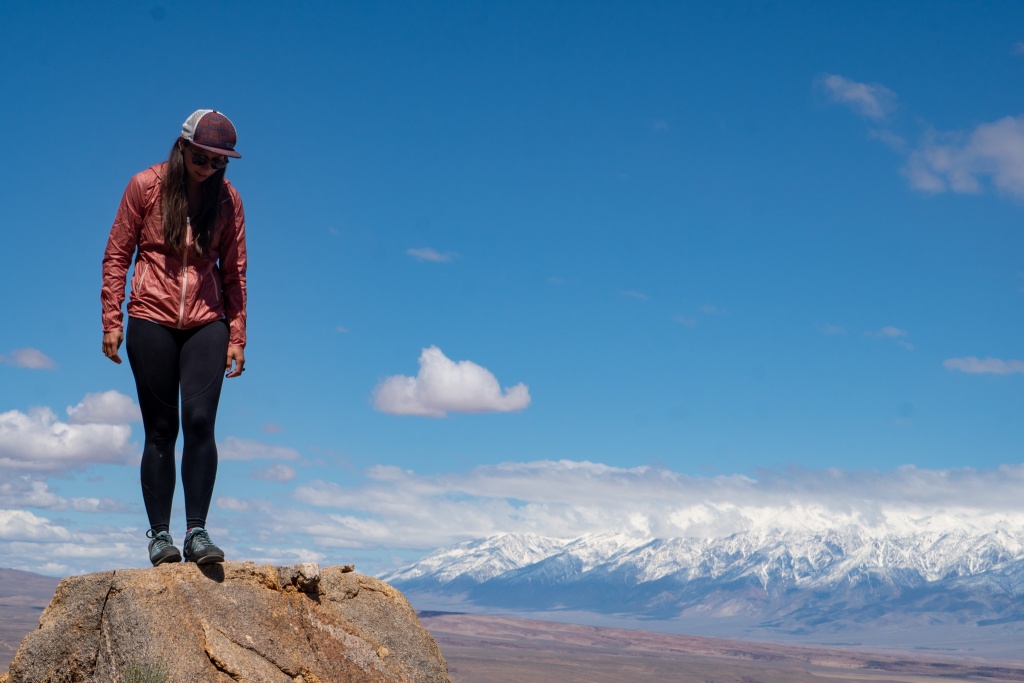We began our testing process by finding the right testers. Whitney Clark and Jane Jackson are California rock climbers who split their time between the granite of the Pacific Northwest and Bishop, with annual trips to Patagonia tossed in for good measure. Whitney estimates that she spends at least 300 days per year in approach shoes. She goes through a few pairs each year thanks to the constant stream of alpine climbing, big walls, and days out cragging.
For this review, Whitney and Jane took their combined years of background knowledge and carefully selected models for side-by-side testing. They wore them up and down trails, on El Capitan, on alpine missions in the High Sierra, and all around the crags of Bishop. Our testers even snuck in a few trips to Patagonia to seal the deal. To score each shoe across the same rubric, we identified four core metrics to guide our assessments.
Climbing Ability
The big thing that sets approach shoes apart from hiking shoes is their sticky rubber and technical climbing abilities. While not as precise as rock climbing shoes, they are meant to carry you over talus slopes and third- and fourth-class terrain. A good pair of approach shoes can even handle fifth-class rock, saving our toes from the all-day pain of rock climbing shoes. To evaluate each shoe's ability to navigate technical terrain, we tested their mettle for edging, smearing, and crack climbing.
A shoe's ability to edge means that the front toe is stiff and precise enough to support us on small features. For this, we climbed easy scrambles in the High Sierra, went bouldering in the Tablelands of Bishop, and tested our limits sport climbing in the Owens River Gorge, where small edges prevail.
We also wanted to know how well each shoe could smear. On low-angle slabs and in talus, we use the whole bottom of our foot to stay connected. Luckily, the Sierra is full of granite slabs. We walked off the top of El Cap, hiked up slabs in Tuolumne, and careened down descent gullies in the mountains.
Finally, cracks. While you may be less likely to find real crack climbing on your approach or descent, we all know a route that requires a tricky move here and there. Also, we really like to rock climb in our approach shoes if the terrain is comfortable for us. For this, we romped around classic Yosemite climbs, where cracks prevail.
Hiking Comfort
In order to really test hiking comfort, there's only one thing to do: hike, a lot! And we did. Whitney spends over half the year hiking and climbing in the mountains and knows how important comfort is to the morale of a trip.
In order to test a variety of terrain, we took each shoe out on long, flat trails as well as steep ones. The steep trails help show us which shoes were too stiff, and the flat ones showed us how far we could really go before our feet started hurting.
We also identified a few key features and paid close attention to these as we walked. Tongue padding, heel padding, and breathability were among the things we took particular notes on.
Support
While we were out on huge backcountry missions, overnight rescues, and multi-day big walls, we started to see how much our shoes could really support us. This category mostly reviews the pros and cons of different levels of stiffness and lateral support.
For big walls, we want the stiffest, most supportive shoe there is. Standing in aid ladders takes a huge toll on our feet, so we looked for shoes that had reinforced sides and really stiff soles.
For long approaches, we wanted a supportive shoe that maintained just enough flexibility to easily navigate uneven terrain. And for long rescues, we wanted the same: a shoe with tons of reinforcement all around.
Weight and Packability
With most of the shoes we wear, they tend to stay on our feet the whole time we're using them, so it's hard to tell the difference a few ounces make. But not approach shoes! Yes, when we go cragging we tend to hike in our shoes, put our climbing shoes on to climb, and leave our approach shoes at the base.
On multi-pitch missions, though, we're often bringing our approach shoes up the route with us so that we can descend another way. For this, we need a lightweight product that can easily be clipped to our harness or stowed away in our packs. We weighed each shoe on a scale to get an objective reading, and then we evaluated their clip loops and ability to pack down small.







